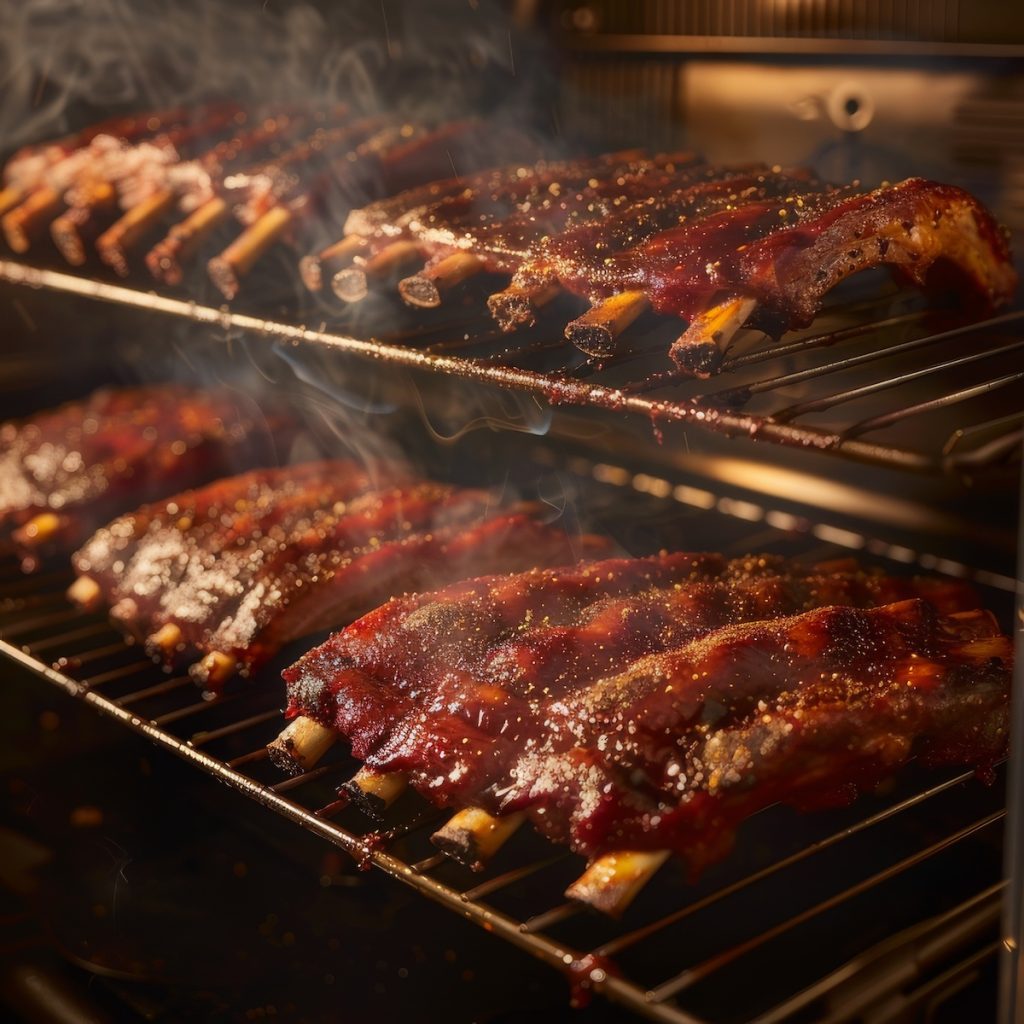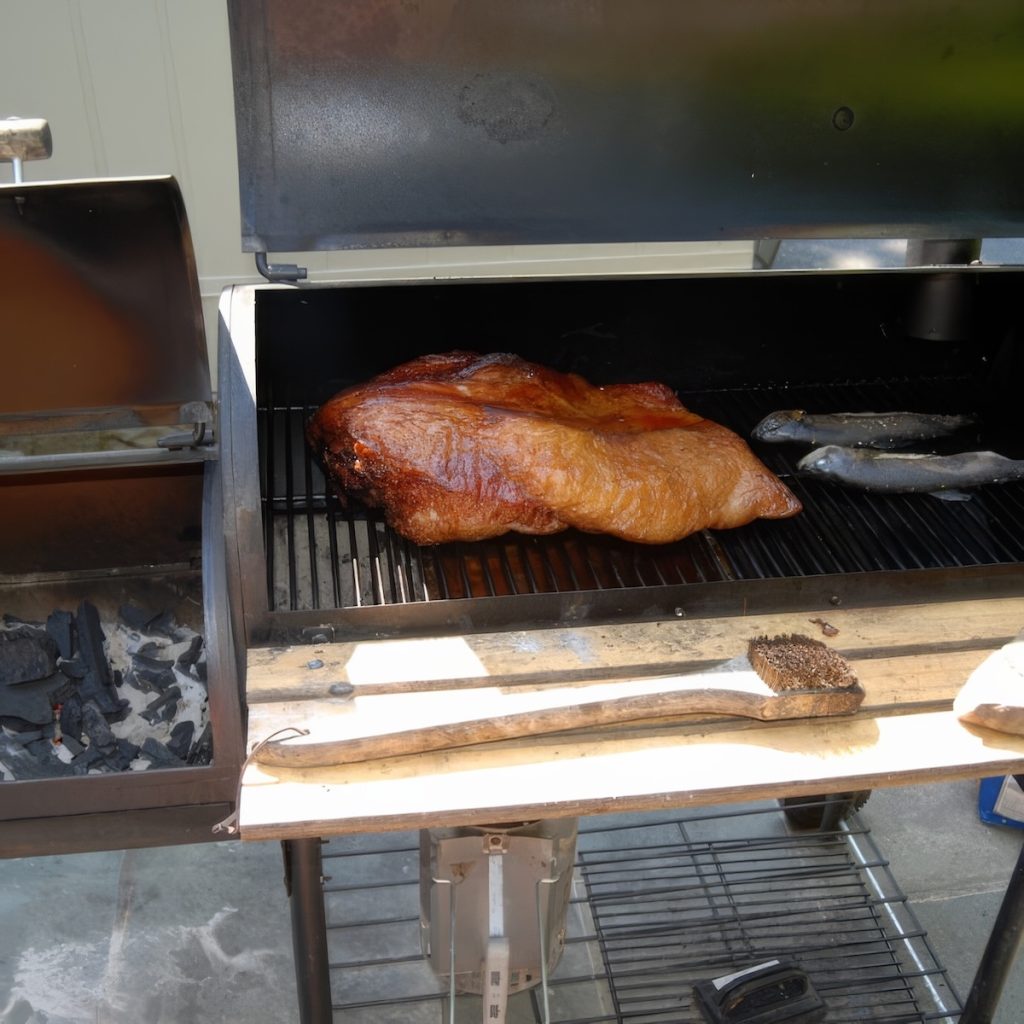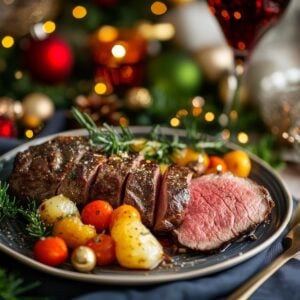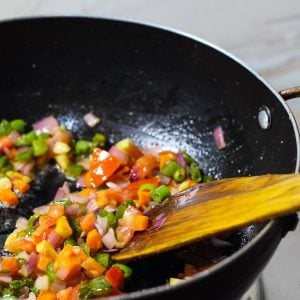Shedding Some Light on Barbecue
Ask ten people in ten different cities what “barbecue” is, and you will likely get ten different answers. Some will say it’s just grilling. Others might talk about smoking or steaming.
Some say barbecue means beef. Others will call foul and say that pork is the meat of choice for barbecue. Like many aspects of cooking, everyone has their own definition of what barbecue is and most often, this comes from where they grew up and how their parents barbecued at home.
In our family, we love barbecued ribs. I started doing a little research in preparation for making some the other day, and the more I read, the more confused I became. I went into it sure that I would be able to make some Kansas City-style ribs for dinner and came away with a lot of questions:
- Do I have to have a smoker?
- Is it okay to wrap the ribs in foil?
- What about baking? Is that barbecue blasphemy?
It would be helpful for me and you to have an overview of the different regional styles of barbecue—the seasonings, cooking methods, and sauces—to shed some light on this confusing subject.
It's All About Terminology
Talk to anyone in the Carolinas, and they will tell you that barbecue is a noun that means “slow-cooked pork cooked with hot smoke” or something along those lines. You can barbecue (verb) meat, but the noun barbecue is reserved for barbecued pork.
But go to Texas, and it’s all about the beef. While folks in the North or South Carolina might cry foul, Texas barbecue (noun) is beef.
And crying foul might be a mild reaction. Very few foods inspire the extreme passion, rivalry and loyalty as barbecue.
Barbecue competitions flourish throughout barbecue country, and teams compete for money, maybe, but mainly for the right to say that their barbecue is the best (and, therefore, the only proper way to make it).
You might hear any of the following sentences regarding barbecue:
- “You must use a dry rub.”
- “You must use a wet rub.”
- “Mop the meat while cooking.”
- “Don’t use sauce until the last few minutes of cooking.”
- “Real barbecue sauce is vinegar-based.”
- “Mustard sauce is the only way to go.”
- “Whole hog barbecue is authentic barbecue.”
- “Barbecue is all about the pork butt.”
- “If your sauce doesn’t have ketchup, it’s not real barbecue sauce.”
Yes, folks who believe in dry or wet rubs will guard their rub mix with the vigilance of a correctional officer. Each of the four basic sauce styles—vinegar, mustard, light tomato, and heavy tomato—has staunch supporters, but barbecue is about smoke at its heart.
You can have barbecued meat without rubs and sauces, but you can’t have it without smoke. So if you’re cooking over high heat, you’re not technically barbecuing.
You are grilling. And there is nothing wrong with grilling–I love to grill. Just understand that you’re not barbecuing, nor will you enjoy a barbecue after cooking.

A Little History
Before we all get too confused, here’s a bit about the history of barbecue in the United States. The Spanish introduced pigs to the United States back in the 1500s. Pigs breed prolifically and can eat just about anything, and the pig population took off, with many of the pigs turning feral.
The Native Americans of the Caribbean and the coast of the Carolinas taught the Spanish and other settlers how to cook the plentiful pork slowly using smoke. And enslaved Africans brought the idea of basting meats as they cooked.
Put these three influences together: the pig, the smoke and the basting, and a uniquely American food was born.
As barbecue spread throughout the Southeast and eventually, throughout the country, regional variations arose. And while there are dozens if not hundreds of different formulations for rubs, mops and sauces, four broad categories or barbecue styles are generally recognized today.
Before I get into the cuts of meat and styles of sauces favored by each region, there’s the small matter of how to cook barbecue. Again, there are regional variations, but as much as I can gather, the following procedure is pretty standard.
How Pork (or Other Meat) Becomes Barbecue
Barbecue is all about the smoke flavor. Low, slow, smoky cooking is what turns meat into barbecue.
Hot smoking is the cooking method we’re talking about here. Not regular smoking, which is done at temperatures well under 200°F and can take days, is more a method of preserving meat than cooking.
Read More
Hot smoking takes place between 200°F-250°F and, while still a long cooking process, is accomplished in hours rather than days.
Many barbecue pits are just that: dug in the ground and lined with brick. These, of course, are not portable and take up a lot of space. These days, you can find many barbecue smokers that come on wheels and are made to be moved around or at least moved out of the way when necessary.
You can tell a smoker apart from a grill because, in a smoker, the firebox is separate from the smoke chamber where the meat is cooked. Therefore, the flame never touches the food in smoking, whereas food is placed directly over hot coals in grilling.
The typical smoker has a firebox on one side and a chimney on the other. The chimney draws the smoke from the firebox, through the smoke chamber where the food is, and then up the chimney. This allows hot smoke to cook the meat slowly.
Juices and fat drip from the meat, adding to the smoke and flavor. (Of course, if the meat is seasoned with a dry or wet rub or is mopped with a thin sauce during cooking, this will add to the flavor).
If you slice a piece of pork or beef barbecue, you will notice a pinkish ring that runs around the meat just below the surface–maybe 1/4″ in from the surface. This is the smoke ring, the hallmark of barbecued meat.
In layperson’s terms, the pinkish-red color comes from the interaction of the smoke and the meat. It takes time for a smoke ring to develop. You will never see a smoke ring in grilled meat unless it was smoked first before grilling.

Some Barbecue Styles
Carolina Style
Carolina barbecue is pork barbecue. In the eastern parts of the Carolinas, barbecue is a whole hog barbecue that is then chopped, mixing meat from all parts of the animal.
In the central and western parts of the states, barbecue is most often pork butt (shoulder). Carolina barbecue is generally served chopped, pulled, or shredded and is often served on a bun with coleslaw.
There are four different kinds of sauces found in the Carolinas, and one, in particular, is unique to a region of South Carolina. In the Eastern parts of the states, a thin sauce based on vinegar and peppers is used as both a mop and a sauce.
A light tomato-based sauce is most often found in the central parts of the states. This is nothing more than vinegar-based sauce with some ketchup added. This adds a bit of sweetness and some warm spices to the mix.
In the West, heavier tomato-based sauces predominate. These sauces are often fairly sweet and spicy, containing ketchup or other tomato products and molasses.
In parts of South Carolina, where many Germans were encouraged to settle to work on family farms rather than plantation-based agriculture, it stands to reason that mustard-based sauce would be popular. Mustard is an extremely popular German condiment, so it was natural that they added it to the vinegar-based sauce.
Yellow barbecue sauce can be startling but delicious if you’ve never seen it. It contains mustard and vinegar, so it sounds a little on the sharp side, but adding some brown sugar makes it a slightly sweet, tangy sauce with a bit of a mustard bite.
Memphis Style
In Memphis, barbecue is generally pork barbecue. The main barbecue dishes are slabs of ribs, served either wet or dry, and pulled pork shoulder. Memphis pit masters pride themselves on serving the best-tasting cuts of meat possible.
They only rely on a little heavy seasoning because the meat tastes so good. I can believe them, too. It is excellent, although I can’t say where they get their meat and what makes it better than any other pork for barbecue.
Dry ribs are rubbed with a mild spice mixture and are then smoked. They are served as-is or with some sauce on the side.
Wet ribs are basted both during smoking and then again before serving. I consider these “standard barbecued ribs”–very sticky, slightly sweet and meltingly tender.
Memphis-style barbecue sauce is relatively thin and slightly sweet. It is based on tomatoes, vinegar and spices, and almost every barbecue cook in Memphis has their own secret spice blend.
Texas Style
Texas is an enormous state, boasting four variations, each influenced by a different group of immigrants.
East Texas barbecue is very similar to Carolina barbecue, although it can be made of either pork or beef. It is smoked with hickory wood and served usually chopped, not pulled, on a bun with a thick, sweet tomato-based sauce.
This type of barbecue was initially brought to the state by enslaved African Americans who had either been sold or moved to the area with their owners. To this day, some of the finest interpretations of this barbecue style come from African-American-owned barbecue shacks.
Central Texas barbecue was created by butchers who had immigrated from Europe and Eastern Europe. Any meats that the butcher didn’t sell that day were smoked for preservation. With this type of barbecue, the sauce is almost an afterthought. Central Texas barbecue is high-heat smoked, usually over pecan or oak.
West Texas barbecue is also referred to as cowboy barbecue. Meats are cooked over direct heat, usually mesquite, and the meats of choice are beef but also goat or mutton.
It seems to me that this was the way the cowboys cooked “on the range.” They scavenged what wood they could find and smoked the meats at hand.
South Texas barbecue naturally enjoys a heavy Mexican influence. This type of barbecue specializes in taking tough, less desirable cuts of beef (including the head), wrapping them in moist agave leaves and burying them in a pit of hot coals.
The meat would roast and steam for several hours, and the resulting meat was used to fill tacos–lengua (tongue) tacos and barbacoa (the rest of the meat) tacos.
Kansas City Style
Whereas the other barbecue styles tend to focus on one or two meats, in Kansas City, nearly anything goes. Of course, they barbecue pork and beef, but chicken, turkey, sausage, and fish are all fair game for the KC pit masters.
Kansas City is situated on a central railroad hub, and they had access to all sorts of meats, so they barbecued everything. Also, since it was a transportation hub, many people came to Kansas City, bringing their barbecue styles.
So, Kansas City is the place on the map where different barbecue styles meet and blend together. The wood of choice for Kansas City barbecue is hickory, and the sauce?
The sauce is also a blending of other styles of sauce. It has the vinegar and peppers from Carolina mixed with Midwestern tomatoes and a fair amount of molasses for the body.
Kansas City-style sauce is one of the thickest around–made to cling to the meat during the last few minutes of cooking, allowing the sugars to caramelize and the sauce to thicken and intensify even more. If you’ve ever eaten KC Masterpiece barbecue sauce, you’ve had a pretty good approximation of the thick, rich, tangy sauce served in Kansas City.
Wow–this is a lot of information, but even so, it barely scratches the surface of barbecue culture in the United States, and I still need to look into the barbecue traditions in the rest of the world!

Do Rib Cuts Make a Difference?
Does where the rib is cut from make a difference? What’s the difference between a baby back rib and a short rib? Check out my post about types of ribs for barbecuing to learn more.













13 Responses
Nice article…I want what that guy is cooking
So do I! – RG
Great Information and I thank you for sharing.
God Bless,
Central Texas bbq also is often smoked with Mesquite and/or Mesquite-Pecan mixed if you are doing beef or pork.
Other meats such as fowl can smoked with any sweet wood e.g. cherry, peach, sassafras and the like.
BBQ and Tamales…deep south western anywhere ….They are my thing
LOVE YOUR BLOG! I am an amateur cook and pastry chef and do most of the cooking and experimenting in our circle of influence. I can therefore not see why making a proper barbeque should not evolve into a branch of my repertoire? In South Africa we ‘braai’. Any protein will do: beef, lamb, chicken, port, all sorts of sausages, seafood (rock lobster, crayfish, crab, abalone, line fish and even oysters for he squeamish. For the health conscious braai volstruis meat.
Lately there is a trend to braai pizzas (both savory and sweet) in a kettle braai,
This cooking method we use is of course more high heat grilling (and often charring that leads to swearing:) and less smoking, so please share a bit more about smoking techniques in a future blog i.e. pre smoking different cuts of meat and smoking during ‘barbequing’ as my sideline efforts with smoky paprika is not always appreciated or successful…
Hi Berdina, thank you so much for sharing your grilling technique (braai) with my readers. I’m going to have to read more about your braai technique and write about it and yes I will continue to write about or find experts to write about barbecue. Thanks for visiting the site.
Good summary of the subject, What is Bar-B-Que.
Makes me want to run out and buy a BBQ for our balcony… it may be against our lease agreement but who cares?
Great read!
Wow very interesting article, I look forward to reading more!
Great article. Who are these people who think that to barbecue is to cook hamburgers or hot doge on a grill? And why do they call a grill a barbecue? Have they ever eaten meat that has been barbecued?
thanks for this educating information. Now atleast i can tell what barbecue is.
Please can you help publish what the difference between raost, grill, smoked meat or chicken. I need this information badly. thanks
I really like the mustard based sauce I need a good recipe for it
I like that you talked about how heavier tomato-based sauces predominate the west. I would love to try those kinds of sauces since I have never tasted one. Hopefully, I can buy barbeque sauces that have fairly sweet and spicy and contain ketchup sauces. It would be great timing since I will have visitors this coming weekend, so I could serve barbeque to them.